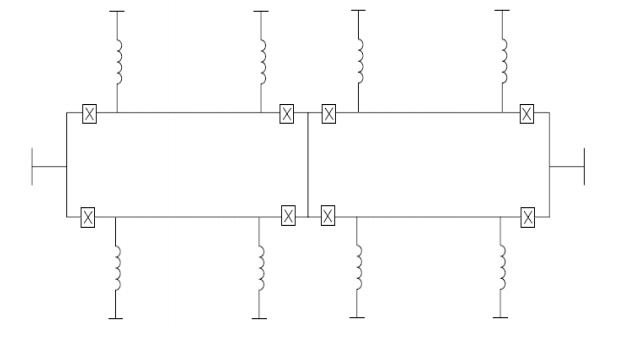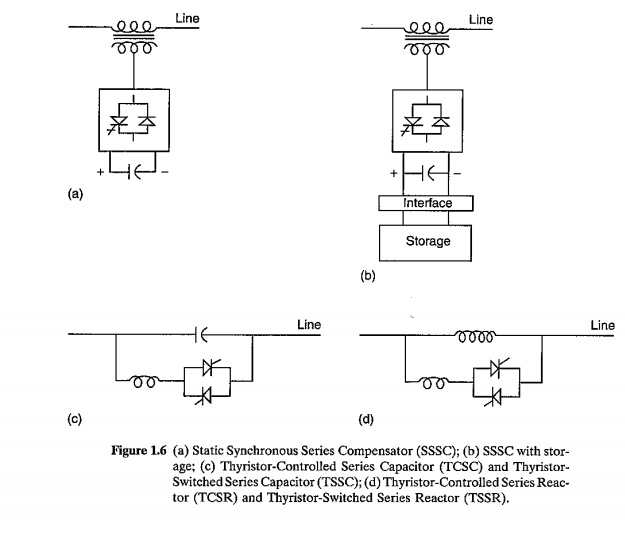Chapter: Flexible Alternating Current Transmission System : Introduction
Passive Compensation and its Types
PASSIVE COMPENSATION
The
reactive-power control for a line is often called reactive-power compensation
and external devices or subsystems that control reactive power on transmission
lines are known as “compensators”.
A
compensator mitigates the undesirable effects of the circuit parameters of a
given line and the objectives of line compensation are invariably
1. To
increase the power-transmission capacity of the line.
2. To keep
the voltage profile of the line along its length within acceptable bounds to
ensure the quality of supply to the connected customers, to minimize the line
insulation costs.

Types
1. Shunt Compensation
2. Series Compensation
1. Shunt Compensation
Ø In a weak
system voltage control by means of parallel compensation is applied to increase
the power quality and improvement of the voltage profile for different system
and load conditions when using a Static Var Compensator (SVC) for fast control
of shunt connected capacitors and reactors.
Ø Shunt
compensation can also be employed as a ‘local’ remedy against voltage collapse
which can occur when large induction machines are connected to the system.
Ø After
system faults the machines load the power system heavily with high reactive
power consumption and the remedy for such fault is strong capacitive power
injection for example by using an either SVC or STATCOM or just switched
capacitors.
Ø The
reactive current is injected into the line to maintain voltage magnitude and
transmittable active power (P) is increased but more reactive power (Q) is to
be provided.
P = (2V2/X)sin(ᵟ/2)
Q = (2V2/X)[1-cos(ᵟ/2)]

2. Series Compensation
Ø The
Series Compensation is a well established technology that primarily used to
transfer reactances most notably in bulk transmission corridors.
Ø The
result is a significant increase in the transmission system transient and
voltage stability and Series Compensation is self regulating in the sense that
its reactive power output follows the variations intransmission line current
that makes the series compensation concept extremely straight forward and cost
effective.
Ø The
thyristor controlled series capacitors adds another controllability dimension
as thyristor are used to dynamically modulate the ohms provided by the inserted
capacitor and this is primarily used to provide inter-area damping of
prospective low frequency electromechanical oscillations but it also makes the
whole Series Compensation schama immune to Sub Synchronous Resonance (SSR).
Ø Series compensation is used to improve system stability and to increase the transmission capacity in radial or bulk power long istance AC systems and referring to below the equation and a series capacitor reduces the line impedance X hence the transmmission P will increase.
Ø This
principle can also be applied in meshed systems for balancing the lods on
parallel lines and the simplest form of series compensation is the fixed series
compensator for reducing the transmission angle thus providing stability
enhancement.
Ø FACTS for
series compensation modify line impedance X is decreased so as to increase the
transmittable active power (P), however more reactive power (Q) must be
provided.
P = [V2/(X
– Xc)]sinᵟ
Q = [V2/(X
– Xc)]{1- cosᵟ}

Related Topics